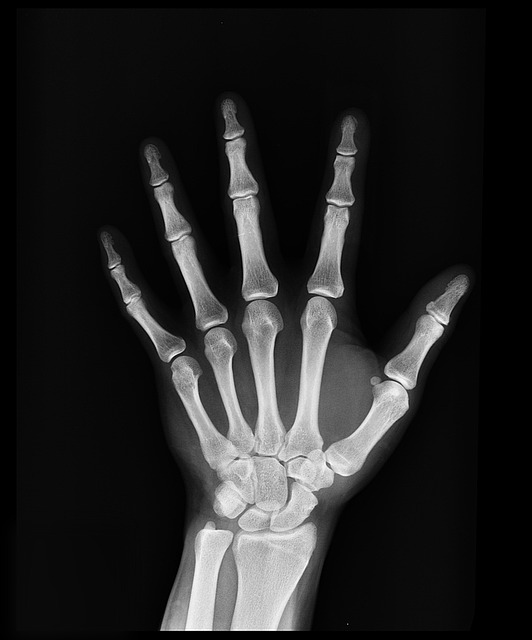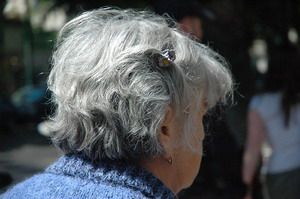 It has been two or three years since I have written on the current information on osteoporosis. Since 26% of women will get severe bone loss leading to fractures, it is an important topic. While much of the basic physiology remains the same, the recommendations for preventing bone loss have changed.
It has been two or three years since I have written on the current information on osteoporosis. Since 26% of women will get severe bone loss leading to fractures, it is an important topic. While much of the basic physiology remains the same, the recommendations for preventing bone loss have changed.What is osteoporosis? Osteoporosis is an inflammatory condition of the bones in which bone mass is lost with age making the bones progressively weaker and more prone to breaking. Often the bones will break without any apparent cause. Vertebra in the spine can collapse or hipbones can suddenly break causing you to fall down. You become fragile. Your life becomes very restricted out of fear of doing anything that might cause you to fall and break something.
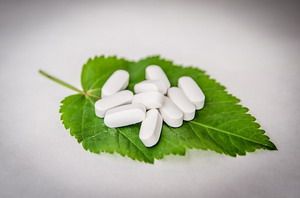
The medical profession’s preventative solution is to take calcium – the most abundant element in your bones. Recently doctors have also started recommending vitamin D so you will absorb the calcium you eat and get it into the blood stream. It seems many years ago some researcher made a math error and put the decimal point in the wrong place in the results concerning on the amount of vitamin D people need each day. The researcher said we need 400 IU when in fact the research showed we need 4000 IU – 10 times as much as the government has been telling us for the past 50 years.
The other popular medical approach is of course drug therapy. Your bones are made by two types of cells – one type that lays the raw bone stuff down and another that shapes and carves the stuff into arches to make the bone strong. The medical approach is to use drugs to poison the cells that carve and shape the bone so that none of the bone stuff will be carved away. This makes it look like there is more bone stuff when you take an x-ray picture of the bone. The problem is that the raw bone stuff is soft like chalk. It is the carvers that make the bone stuff into strong materials that will resist breakage. So the medical approach is to poison the very cells that make your bones strong so that you will look better on x-ray studies (Dexa-scan).
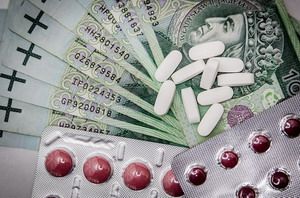 Of greater concern was what I read in a research paper on Prolia – the newest of the osteoporosis drugs. Curiously, the study was funded by the maker of the drug – Amgen. This concerns the incidence of negative side effects. Usually these are reported as some small percentage chance of experiencing each of a couple dozen negative effects. This study reported the incidence of negative outcomes as an aggregate of all possible outcomes. In other words they revealed what your chances were of having any negative reaction at all. The study compared Prolia to the other common biphosphonate drug Denosumab. The scary result was that the chances of having a negative outcome from either drug was 97% and the chance of a serious and possibly life threatening outcome 60% for one and 62% for the other. So virtually everyone who takes these drugs have negative side effects and almost 2/3rds of the people have serious side effects! This study was on men so the numbers may be different for women, but just the same, those odds are scary.
Of greater concern was what I read in a research paper on Prolia – the newest of the osteoporosis drugs. Curiously, the study was funded by the maker of the drug – Amgen. This concerns the incidence of negative side effects. Usually these are reported as some small percentage chance of experiencing each of a couple dozen negative effects. This study reported the incidence of negative outcomes as an aggregate of all possible outcomes. In other words they revealed what your chances were of having any negative reaction at all. The study compared Prolia to the other common biphosphonate drug Denosumab. The scary result was that the chances of having a negative outcome from either drug was 97% and the chance of a serious and possibly life threatening outcome 60% for one and 62% for the other. So virtually everyone who takes these drugs have negative side effects and almost 2/3rds of the people have serious side effects! This study was on men so the numbers may be different for women, but just the same, those odds are scary. So what natural things can we do to prevent osteoporosis? For years the advice was to exercise by walking. But more modern research has shown that walking does nothing to prevent bone loss. It is not intense enough. Exercise is vital, but it has to be intense enough to cause the bones to flex. That means either you have to lift more weight or you have to run hard enough to cause a hard enough heel strike to bend the bones.
So what natural things can we do to prevent osteoporosis? For years the advice was to exercise by walking. But more modern research has shown that walking does nothing to prevent bone loss. It is not intense enough. Exercise is vital, but it has to be intense enough to cause the bones to flex. That means either you have to lift more weight or you have to run hard enough to cause a hard enough heel strike to bend the bones.In the past I talked about using Whole Body Vibration, as studies show that it increases bone mass. That is a painless way to get your needed exercise. Another good way to fight osteoporosis is by wearing a weighted vest while doing your daily activities to increase the pressure on your bones. The general recommendation is to work up to a vest weighing 10% of your body weight for 1 ½ to 2 hours a day while you move about. Your body is smart and a conservationist by nature. If you don’t prove to it that you need stronger bones by lifting heavy things, it decreases your bone size to match your usage. Use it or lose it is the absolute rule in the body.
 Now what about nutrition? Do we need all that calcium they have been telling us we need? Probably not. In cultures all over the world where calcium consumption is quite low, they still have strong bones – stronger than ours. There are likely several reasons for this. For one, bones are made of over a dozen minerals, not just calcium. If you take massive doses of just one mineral (like calcium) you will suppress the absorption of other needed minerals. For two, most of these other cultures I am talking about have very natural diets and generally do not have enough calories. This produces very low levels of inflammation in their bodies. Osteoporosis is the result of inflammation in the bones. Nothing contributes to inflammation more than our over-abundant, overly-processed Western diet. For three, the lower calorie, more natural diet of these peoples does not stress their ability to digest their food. Our American diet is destroying our ability to digest. How many people do you know that don’t have some sort of digestive complaint by the time they reach their forties and fifties? Poor digestion means that we simply don’t absorb the nutrients we need to build strong bones.
Now what about nutrition? Do we need all that calcium they have been telling us we need? Probably not. In cultures all over the world where calcium consumption is quite low, they still have strong bones – stronger than ours. There are likely several reasons for this. For one, bones are made of over a dozen minerals, not just calcium. If you take massive doses of just one mineral (like calcium) you will suppress the absorption of other needed minerals. For two, most of these other cultures I am talking about have very natural diets and generally do not have enough calories. This produces very low levels of inflammation in their bodies. Osteoporosis is the result of inflammation in the bones. Nothing contributes to inflammation more than our over-abundant, overly-processed Western diet. For three, the lower calorie, more natural diet of these peoples does not stress their ability to digest their food. Our American diet is destroying our ability to digest. How many people do you know that don’t have some sort of digestive complaint by the time they reach their forties and fifties? Poor digestion means that we simply don’t absorb the nutrients we need to build strong bones.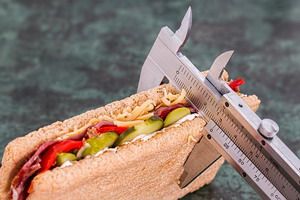 So what can we do nutritionally? The primary nutrients for strong bones are vitamin D, vitamin K2, trace minerals, omega 3 fats, good quality proteins, zinc, magnesium, calcium, phytonutrients, and anti-inflammatory and anti-oxidant herbs and foods. To be properly absorbed you need to address any issues like poor stomach acid, low enzyme production, poor liver processing and intestinal health. If you have food sensitivities, they need to be addressed. If you are reactive to grains (and 30% of you are significantly reactive) you need to avoid them. If you have metabolic syndrome due to eating too many carbs and sugars you are kicking up a storm of systemic inflammation, some of which will increase osteoporosis.
So what can we do nutritionally? The primary nutrients for strong bones are vitamin D, vitamin K2, trace minerals, omega 3 fats, good quality proteins, zinc, magnesium, calcium, phytonutrients, and anti-inflammatory and anti-oxidant herbs and foods. To be properly absorbed you need to address any issues like poor stomach acid, low enzyme production, poor liver processing and intestinal health. If you have food sensitivities, they need to be addressed. If you are reactive to grains (and 30% of you are significantly reactive) you need to avoid them. If you have metabolic syndrome due to eating too many carbs and sugars you are kicking up a storm of systemic inflammation, some of which will increase osteoporosis. 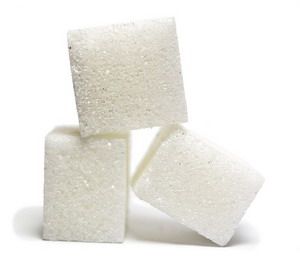 Sugar is especially responsible for promoting bone loss. There is simply nothing good about sugar. It is a poison when you use more than 4 teaspoons a day. It should be used in quantities just like salt. It is a flavoring agent, not a food. And yet the average American eats almost a half-pound of sugar a day. Can you imagine eating a half-pound of salt a day?
Sugar is especially responsible for promoting bone loss. There is simply nothing good about sugar. It is a poison when you use more than 4 teaspoons a day. It should be used in quantities just like salt. It is a flavoring agent, not a food. And yet the average American eats almost a half-pound of sugar a day. Can you imagine eating a half-pound of salt a day?A special side note – recent research is discovering that a percentage of osteoporosis is actually due to autoimmune disease. I expect we will be hearing a lot more about this cause in the future. In these cases we have to tackle the problem on a very different level – by putting out the fires of inflammation and making massive lifestyle and diet changes.

In breaking news (pun intended) researchers in Israel have discovered that the bone formation system in the body is controlled by cannabinoid receptors – the things that respond to CBDs – the medically active component of marijuana and hemp. Extracts of CBDs speed the healing of fractures and make the bones stronger. These extracts have the THC that produces the psychoactive effects of marijuana removed. The researchers expect that this discovery will open up a new class of drugs for osteoporosis. In the mean time CBDs are readily available legally in this country.

In breaking news (pun intended) researchers in Israel have discovered that the bone formation system in the body is controlled by cannabinoid receptors – the things that respond to CBDs – the medically active component of marijuana and hemp. Extracts of CBDs speed the healing of fractures and make the bones stronger. These extracts have the THC that produces the psychoactive effects of marijuana removed. The researchers expect that this discovery will open up a new class of drugs for osteoporosis. In the mean time CBDs are readily available legally in this country.
So to recap how to treat or avoid osteoporosis:
1. Exercise with weights or use high impact
2. Take at least 5000IU of D3 and 180 mcg of K2
3. Consume a full complement of trace minerals
4. Consume enough zinc, magnesium, and calcium
5. Be sure your digestion is good – correct as needed
6. Eat an anti-inflammatory diet like a paleo diet
7. Consider herbals to improve bone health
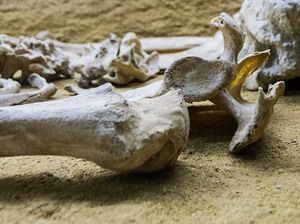 This article touches on some of the changes to the field of osteoporosis in the last few years. It is a complex subject with some simple answers. Basically to fight osteoporosis we have to eat and live in a way that imitates our ancestors. Osteoporosis is a disease of modern civilization. The cure is to stop being so modern.
This article touches on some of the changes to the field of osteoporosis in the last few years. It is a complex subject with some simple answers. Basically to fight osteoporosis we have to eat and live in a way that imitates our ancestors. Osteoporosis is a disease of modern civilization. The cure is to stop being so modern. 